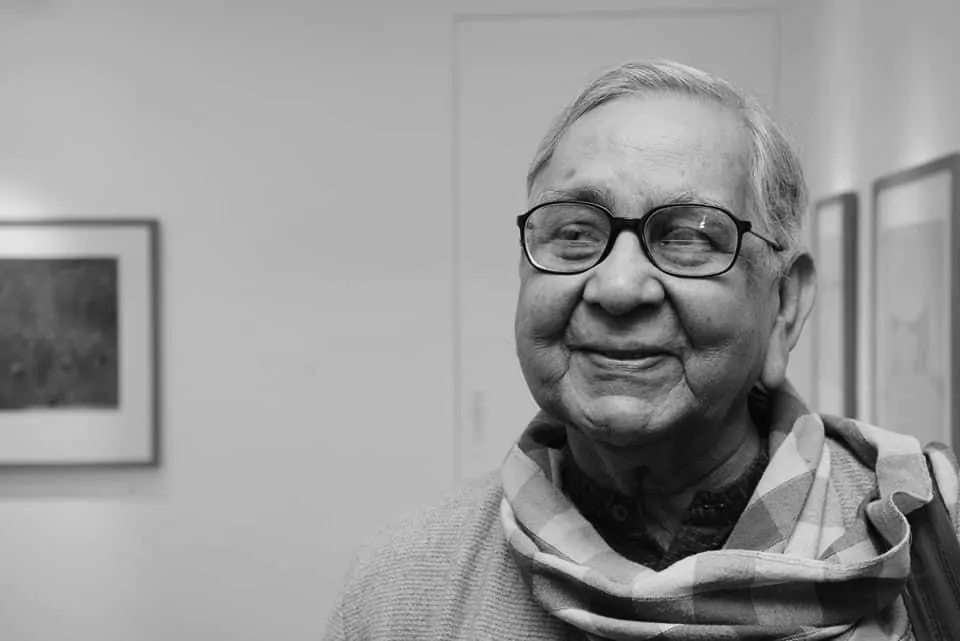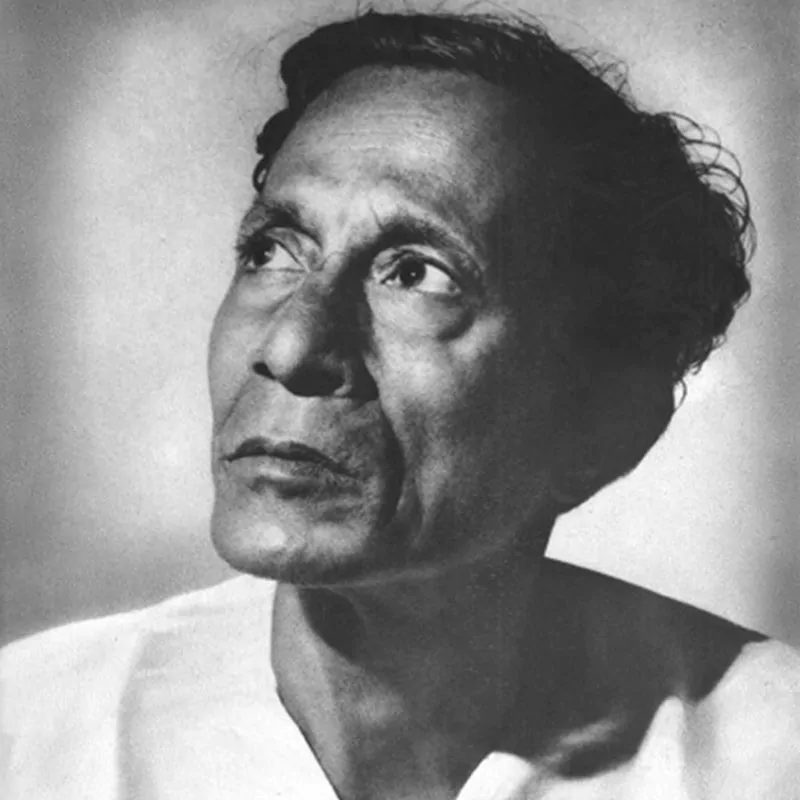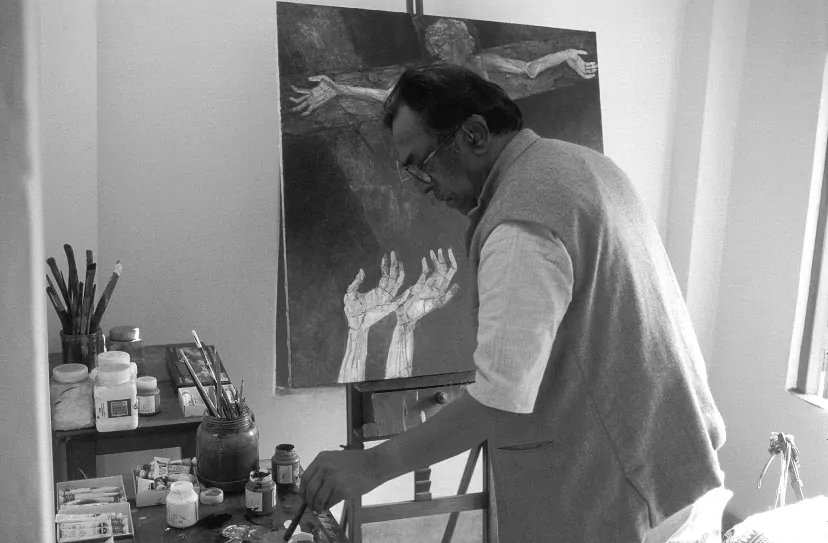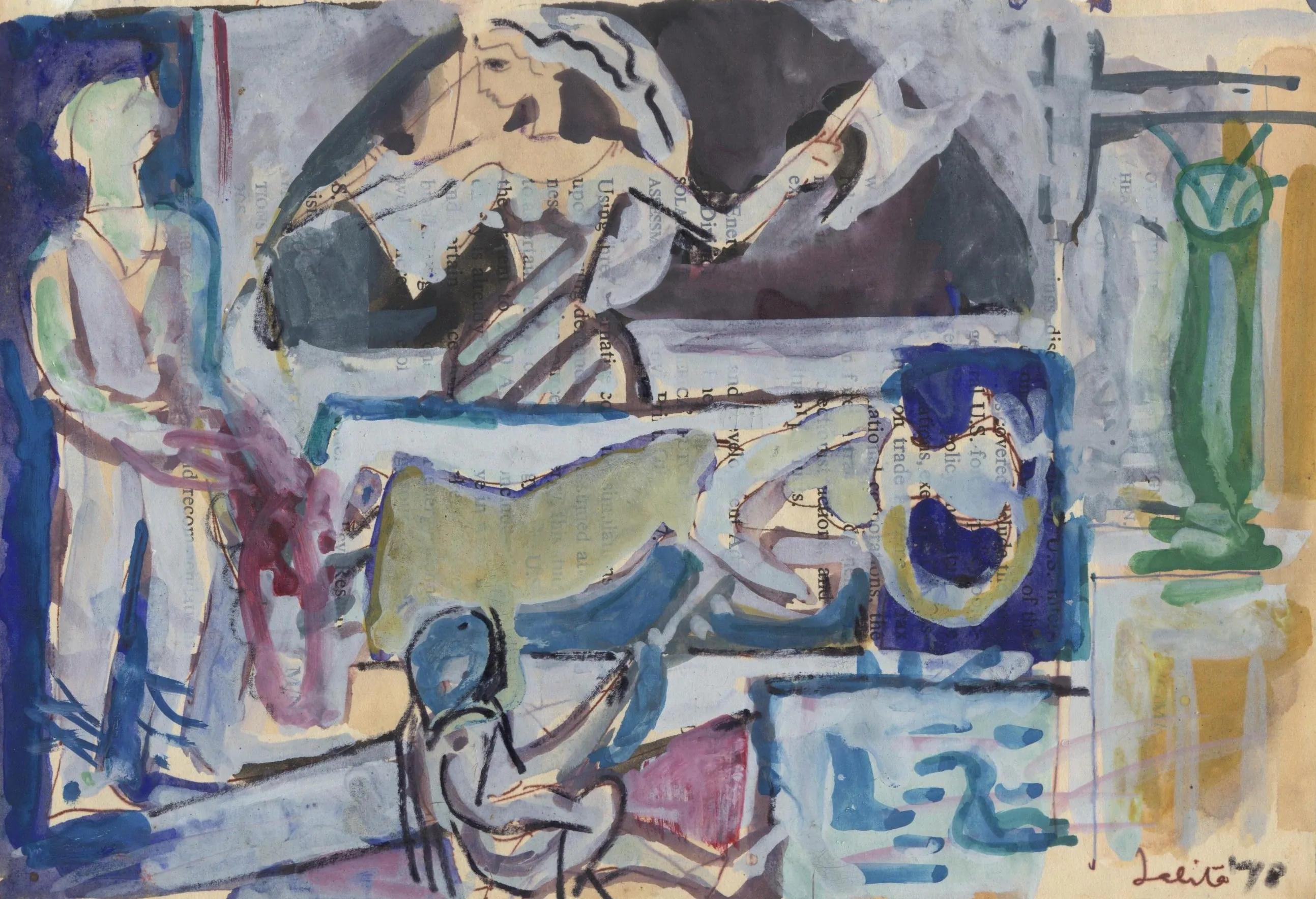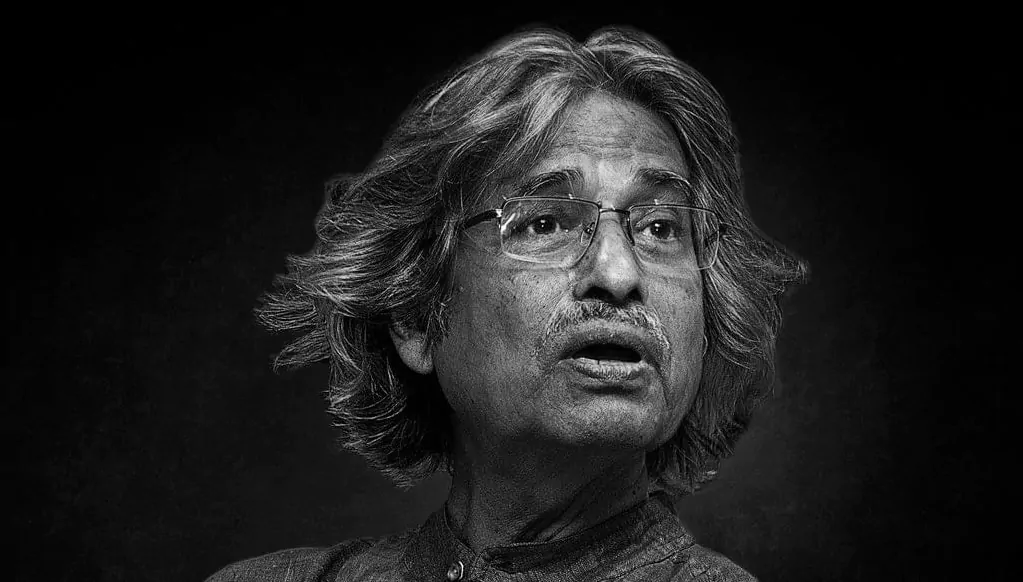Prokash Karmakar-The Bohemian Master.
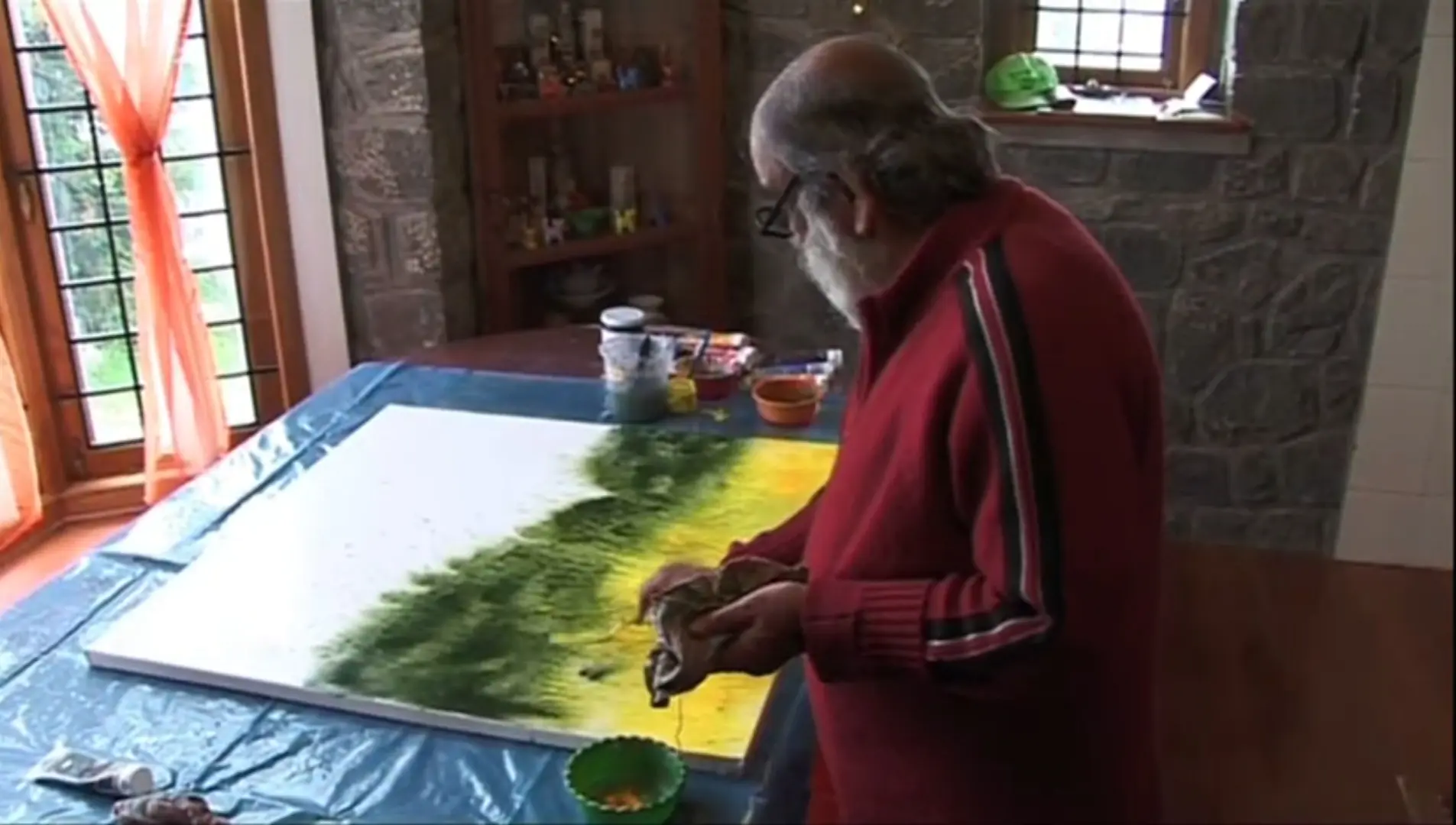
Prokash Karmakar (1933-2014) lived in the city of Calcutta for most of his life. One of the greatest gifts to the city, Prokash made immense contributions to mainstream modern & post-modern Indian Art during the second half of the 20th century & the first few decades of the 21st.
Born to the well-known artist Prahlad Karmakar,who taught painting at the famous Government School(later College) of Art & Craft,Calcutta. At the time when Victorian ideas of sexual morality was strictly followed in British India, the Directorate of Public Instruction would not allow nude study in art institutions throughout the country. Prahlad arranged for nude classes in his studio & the students from the art school came for classes every evening. Young Prokash grew up in this intellectual & artistic atmosphere. However, a year before Independence Prahlad died. At the age of thirteen, he joined the defence party. During the clashes & the Calcutta killings,one night a group of thugs broke into his father’s studio & tore down Prahlad’s paintings from the wall & set them on fire. The incident angered Prokash & left a huge scar on him.
At the age of fourteen,young Prokash found himself in a poverty stricken family,his mother feel ill & soon passed away. He soon joined the Government College of Art & Craft. For two years he struggled but as he hardly had any money,he found it difficult to continue his studies. In between he worked in a blockmakers outfit,subsidising his income by book cover designing & illustration. For a couple of years he drifted with the waves,struggling hard to keep his head out of the water. Finally he joined a large chemical firm that produced indigenous medicine where he rose to become the art director. For him,a permanent employment was a promise of security.
However he longed to paint in his spare time. Kamalaranjan Thakur,once a student of Prahlad Karmakar began teaching him the techniques of transparent & opaque watercolours. Around 1959 after his brief coaching with Thakur,he joined Dilip Dasgupta’s studio. Here,before & after office hours,he concentrated in learning the art of instant sketching,life drawing & the use of various mediums like oils. The other members of the group like Karuna Shaha,Arun Bose,Sanat Kar,Santosh Rohatgi & Sukanta Basu were more advanced as they were not dropouts like him. Being very competitive he worked hard to recover lost ground.
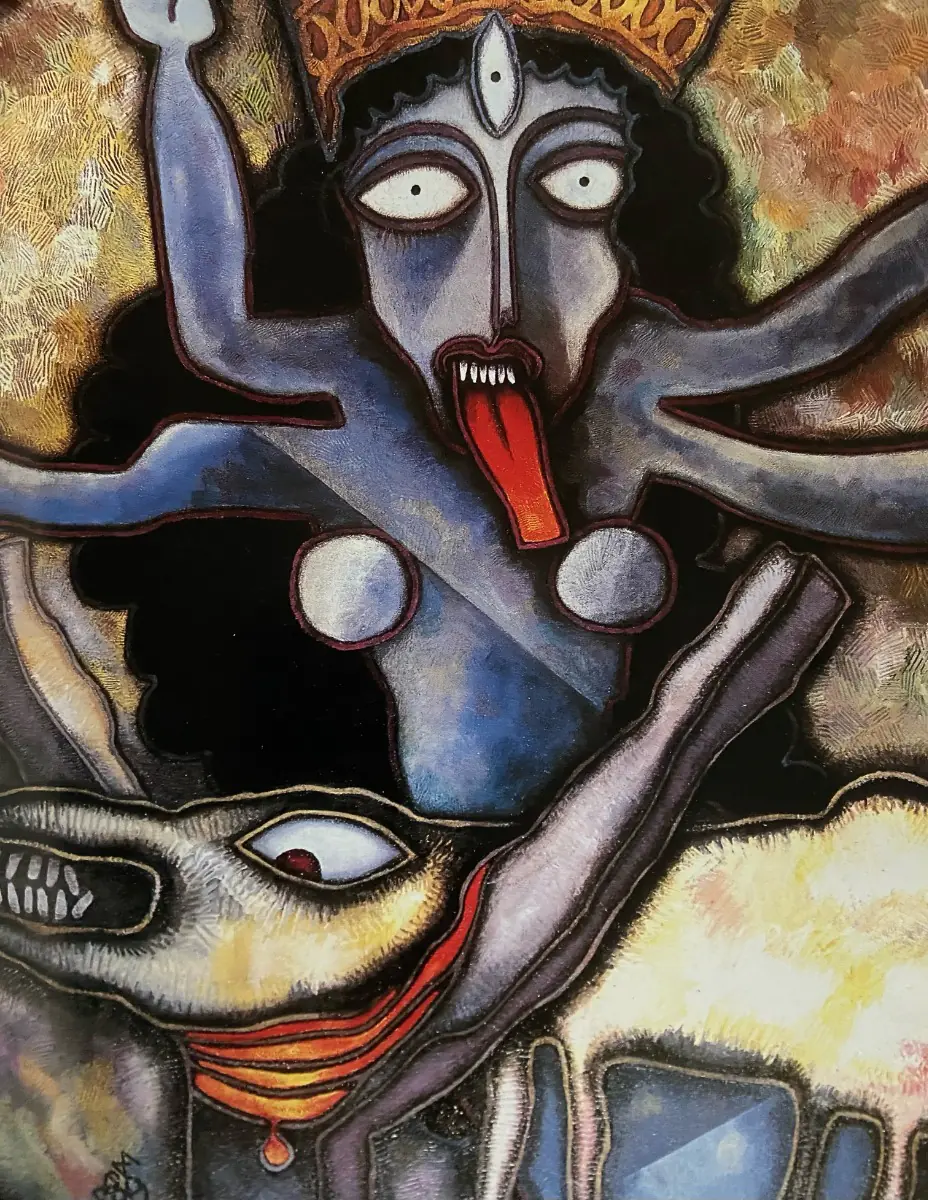
Kali, by Prokash Karmakar,1999.
In 1959 he had his first pavement show on Sudder Street on the railings of the Indian Museum,he became famous overnight. The media acclaimed him as the messiah of contemporary art. The largest circulating Bengali newspaper even printed an editorial praising him for bringing art out in the open air.It was during this stint that he started participating in the newly formed Lalit Kala Akademi.
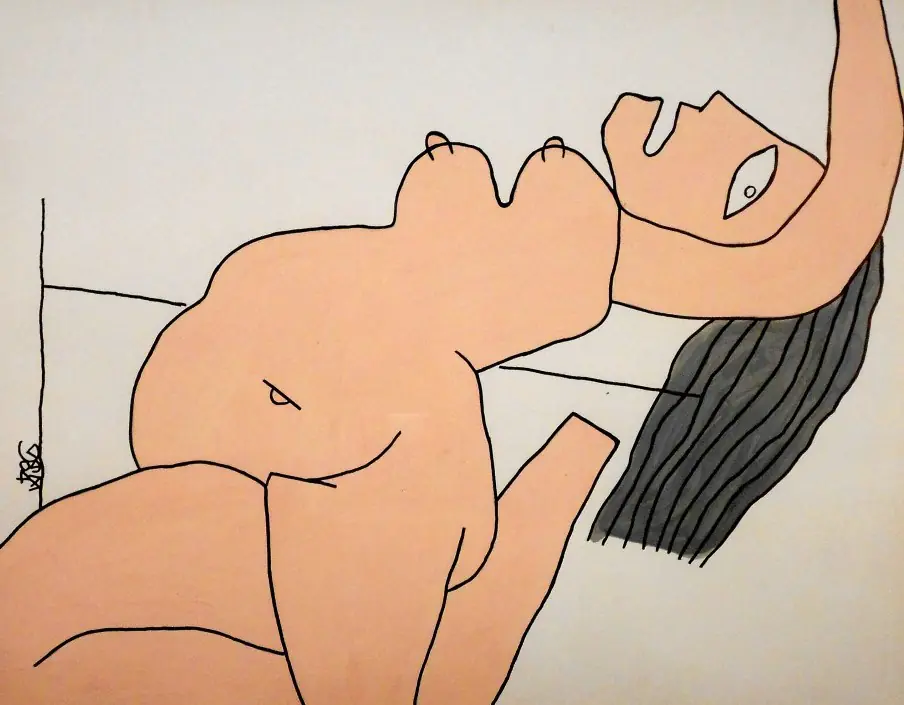
Prokash Karmakar- Reclining Nude.
As he mastered a variety of mediums & techniques,he began to understand the principles involved in pictorial delineation,he felt the need to experiment with new modes & techniques of expression. It was at this time of crisis that his friend & artist Bijon Choudhury took him to one of the greats of 20th century Indian Art-Nirode Mazumdar(1916-1982). Mazumdar had returned from France after a twelve year stay. He had once been a student of Abanindranath Tagore & his Neo-Bengal School. As a young man he was involved in searching his roots. After his apprenticeship with Abanindranath,he rose up in revolt. He felt the school was a gymnasium that students the futile methods of rendering the classics in paraphrase. In 1943,he & a few other artists formed the ‘Calcutta Group’ that was later instrumental in inculcating the tradition of modernity in post colonial Indian art.
Mazumdar invited Prokash to join his studio & work with him. He gave Prokash a thorough grounding of the art of man from the days of cave shelters to more modern times. He worked from nude models as well. He made Prokash aware of forms,substances,concepts & techniques of art. In effect he helped Prokash to experiment & discover a significant personal style. In 1961 he became a founding member of The Society of Contemporary Artists. He broke away & with artists like Rabin Mondal & Gopal Sanyal,formed the Calcutta Painters.
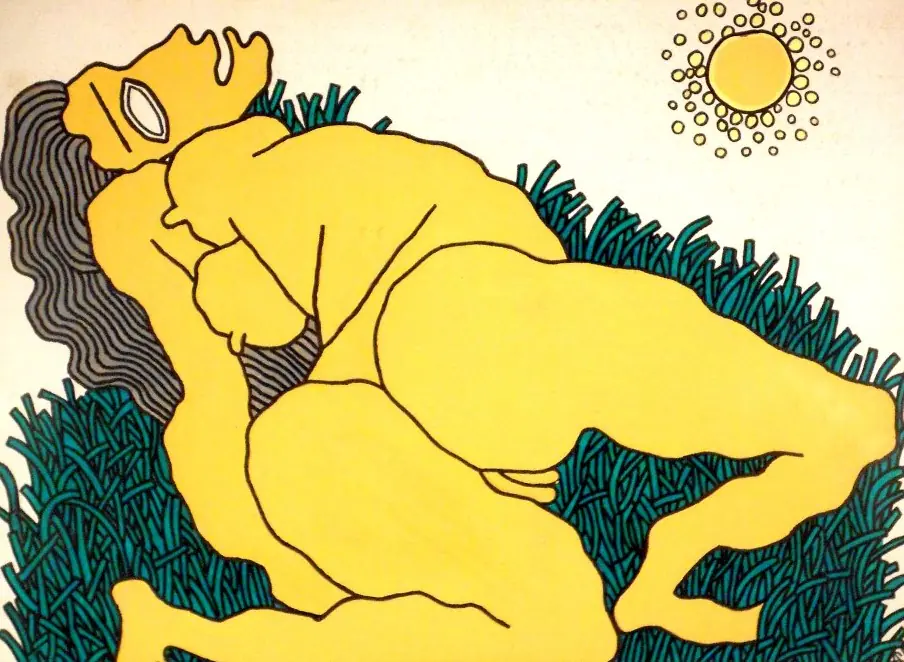
Karmakar is remembered for his nudes set against lush surroundings.
In 1966,he won the National Award for painting at the Lalit Kala Akademi’s annual exhibition. It was an award he richly deserved & put him on the art map of India. Two years later he left for France on a Fellowship given by the French Government. While in Paris,he got the opportunity to exchange ideas with the leading painters & see their works. He also travelled widely in Europe & spent long hours in the museums studying Old Masters & the Impressionists. Back home,he reworked all these European experiences into a grandiose self-style rooted basically in Indian forms. Elements of cubism & expressionism kept recurring in most paintings. A born draughtsman, he loves to draw.He draws as much as he paints-even more at times.
His drawings speak of his sophisticated sensibility as well as his concern for the simple man His lines are firm & have all the plasticity & movement that one would expect from a master. His showmanship & humanitarian concern had won him a large following even amongst those who never understood art. There were definite elements of pantheism in his work. His landscapes with ponds,lakes,streams,crooked yet erect trees,lush tropical vegetation,rugged terrain,the enchanting sky,the variety of moods found in nature during the cycle of night & day hint sometimes at a harmonious & yet chaotic world people inhabit.
As an artist,Prokash Karmakar would possibly feature in any attempt to portray Calcutta’s art scenario. A maverick,his bohemian lifestyle was copied by the younger lot & criticized by the senior section of the city’s civil society.
Vinayak Pasricha.








